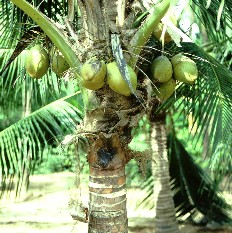By ANIRUDH SINGH
Saturday, March 15, 2008
Last month the media was spell-bound by Virgin Atlantic's arguably
momentous flight from Heathrow to Amsterdam.
A commercial airliner had for the first time taken to air with one of
its four engines powered by a blend of coconut and babassu palm oils.
But Richard Branson had to admit that for such bio-fuel-powered flights
to go commercial, one would have to await the development of "second
generation bio-fuels".
So what is so important about bio-fuels, and why was Branson so reserved
about its true worth?
There has been a global frenzy of interest in bio-fuels over the latter
part of the decade, with developed and developing countries alike
joining the fray in trying to benefit from their promise as clean energy
substitutes for fossil fuel.
In the US, corn for ethanol production has increased by 2.5 times
between 2000 and 2006. Japan, which needs some 40 billion litres of
diesel per year to feed its thirsty transportation sector, has begun
thinking seriously about coconut methyl ester (CME), a coconut
oil-derived bio-diesel, in an endeavour to reduce its carbon emissions.
Malaysia and Indonesia are the leading global producers of palm oil, an
agricultural food product that can be used as a bio-fuel. Indonesia
produced some 17 million tonnes of palm oil in 2007, and plans to plant
an additional five million hectares with palm oil, jatropha, sugar cane
and cassava by 2010 as bio-fuel feedstock.
The global movement to go bio-fuel began with the awareness of the
ostensibly carbon-neutral nature of bio-fuels. Replacing fossil fuels
with bio-fuels should reduce net emissions of the green-house gas (GHG)
carbon dioxide.
However, an unfortunate reality about most bio-fuels is their dual
importance as food for humans and fuel for transport. Strong competition
from both these two sectors has thus been forcing world food prices higher.
Then, last December, a story appeared in the New Scientist that suddenly
put a damper on the bio-fuel hype, and created real doubt as to the
ability of these fuels to reduce net carbon emissions.
Quoting studies from several papers, the article pointed out that there
was not enough land or water to grow the new crops necessary to achieve
the future global bio-fuel production targets, and clearing of primary
forests, ancient grasslands and wetlands would produce carbon emissions
and create carbon debts.
Perhaps most significantly, the article revealed that the addition of
nitrogen-containing fertiliser to crops would produce N2O, which is a
296 times more potent GHG than CO2, and would completely wipe out all
carbon benefits of using biofuels.
The story let the air out of the bio-fuel bubble. In a somewhat cruel
stroke of irony for us, it happened just when Fiji was gearing to join
the bio-fuel bandwagon.
The Fiji Sugar Corporation had just selected Japan's Sojitz Corporation
as a joint partner in an ethanol-making project that could see Fiji
producing substantial amounts of ethanol from molasses, mostly for
export to Japan. And now there is talk of the prospects of a $40 million
investment in a cassava-to-ethanol project by the Chinese.
The answer lies somewhere in between
So where do we go from here? Before we make any irrevocable decisions
based on these observations, it is important to point out that they
cannot be regarded as conclusive or exhaustive at this stage. Crutzen,
who revealed the nitrous oxide problem, is still revising his paper. The
above authors certainly do not appear to have considered all options in
their proclamation of bio-fuels as a lost cause.
What are bio-fuels?
Simply put, bio-fuels are energy-rich organic substances (usually
liquids), derived from plants and animals, that can be used as fuels for
transportation, power generation and other needs.
Examples are vegetable oils such rapeseed, soy-bean, palm, coconut and
peanut oils, animal fats such as lard and tallow, as well as bio-diesel
and ethanol.
Our indigenous biofuel resources
Fiji imported 905 million litres of fossil fuel in 2006, costing the
country $1 billion. Clearly we will do well even if we could replace a
fraction of this imported fuel by indigenous bio-fuels.
The first such fuel that comes to mind is coconut oil. Our coconut
industry however, has been on the decline for many years. Over the last
30 years, copra production has shrunk from 30,800 tonnes to a mere
11,100 tonnes in 2006. We must increase our production by an order of
magnitude if we really want to see a Fijian bio-fuel industry based on
copra.
Ethanol from molasses, cassava
The other biofuel option available to us is ethanol. Fiji produces about
100,000 tonnes of molasses each year as a byproduct of sugar production.
If we go by the Australian experience where one tonne of molasses
produces 287 litres of ethanol on average, than we could be producing as
much as 30 million litres of ethanol annually.
The recent intense interest in producing ethanol out of cassava faces
two challenges. Firstly, unlike molasses, cassava is a food crop. Thus
using it for ethanol generation will inevitably push the cassava prices
up in the food market.
The other problem is the potential adverse effect of such a venture on
carbon emissions. While biofuels on their own produce net carbon savings
by replacing the carbon dioxide-emitting fossil fuels, the situation is
different if new land has to be cleared of existing vegetation to plant
cassava.
The carbon in the cleared vegetation eventually enters the atmosphere,
producing a net carbon deficit in the global warming equation.
Another way of putting this is to say that destroying existing
vegetation to develop bio-fuel plantations will create a carbon debt, as
palm oil plantations have done in Indonesia. Whatever the case, extreme
care must be exercised in deciding the way forward with biofuels
production in Fiji.
- Dr Anirudh Singh is an Associate Professor in physics at USP, and
president of the South Pacific Physics Society
Source: http://www.fijitimes.com/story.aspx?id=83868
--
Check for earlier Pacific Biofuel posts: http://pacbiofuel.blogspot.com/

No comments:
Post a Comment